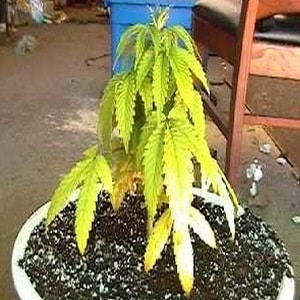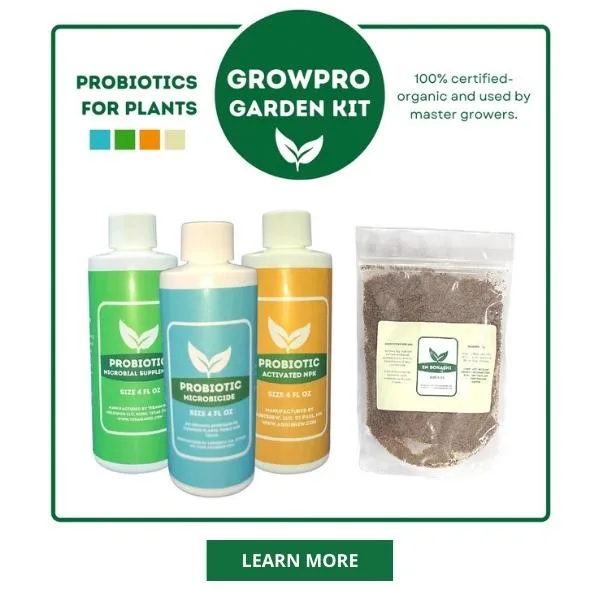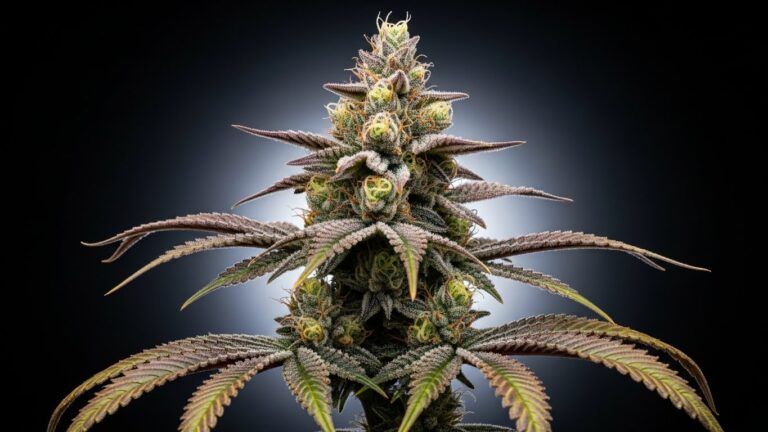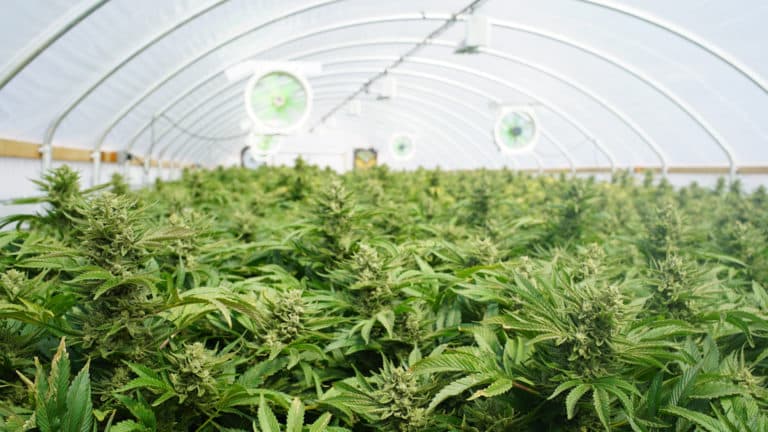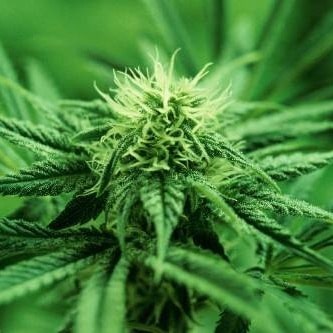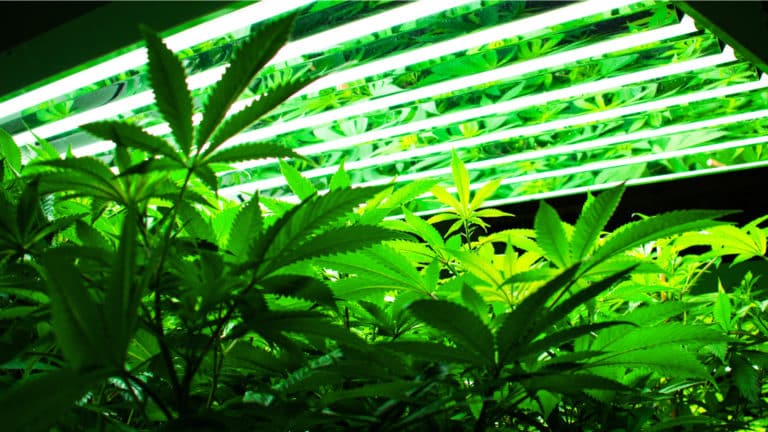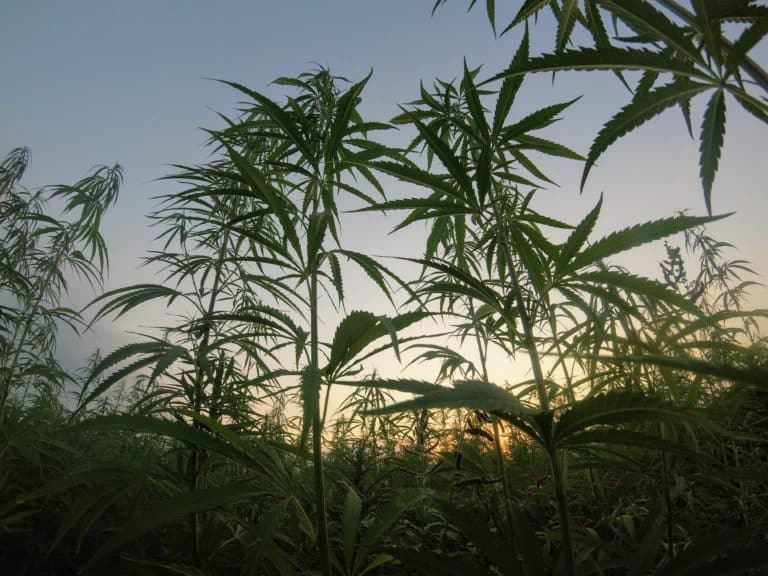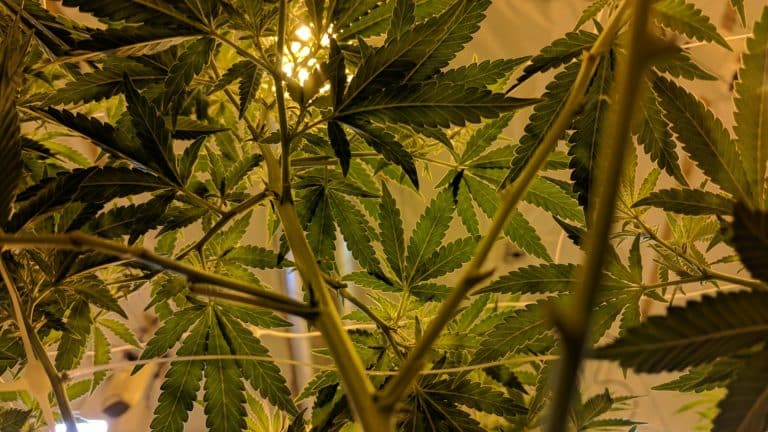Nitrogen is easily one of the most important nutrients for the cannabis plant. It is directly responsible for producing chlorophyll and amino acids, and it’s also vital to the process of photosynthesis. Plant tissue is also made up largely of nitrogen, meaning that growth would halt fast in the event of a deficiency.
Signs of a Nitrogen Deficiency in Marijuana: What does it look like?
A lack of nitrogen is one of the most common nutrient deficiencies found in marijuana. It starts initially in the lower leaves which turn to a pale green color. The leaves will then turn yellow and start to die as the remaining nitrogen in the plant travels to assist the new growth. This obviously makes nitrogen very mobile. The mark of the deficiency will progress up the plant and only the new growth at the top will appear to be green. The lowest leaves will start to turn yellow and wilt. The process of the leaf’s death starts at the tips and goes inward.
You may also notice that the leaves are smaller, growth reduces, and the marijuana plants do not flourish. Stems and petioles gain a slight red or purple hue.
An excess of nitrogen produces a fuller, darker green expansion, but this is more vulnerable to pests and diseases. Also, the stalks start to lose flexibility and turn brittle.
How do you Fix a Marijuana Nitrogen Deficiency ?
To fix a nitrogen deficiency, it’s best to use water-soluble nitrogen to get the element directly to the roots. Other types of nitrogen (like urea) are insoluble and require breaking down before they can be used properly. Once fertilization has begun, any nitrogen-deficient plant will take in as much nitrogen as it can and the plant will regain its healthy Kelly green. Plants will recover in around 7 days, but the most-damaged leaves likely won’t recover.
Using any fertilizer that has a high “N” level in the N-P-K ratio will help the plant make a recovery. Many hydroponic vegetative formulas are water-soluble making them ideal choices for a nitrogen deficiency.
Other items that might do the trick include:
- Calcium nitrate (CaNO3) as a foliar fertilizer
- Fish emulsion
- Bat or seabird guano
- Cottonseed meals
- Alfalfa
- Manure
- Feather meal
- Fish meal
It should also be noted that there is no point at which the marijuana plant should be without nitrogen at any point during its growth cycle. Of course, nitrogen is most important during the vegetative stage to encourage growth. Many people might suggest that you eliminate nitrogen entirely during the flowering stage, but that is not the case. While you should not have as much nitrogen during the flowering stage, you should still maintain enough nitrogen for the plant to manufacture vital amino acids.
Bloom fertilizers tend to have more phosphorus and potassium than they do nitrogen, but it’s common for plants to exhibit a nitrogen deficiency during the mid- to late-flowering period. This can cause plants to lose leaves and reduce yield as the nitrogen exits the old growth for new growth.
You should gradually switch over to bloom fertilizers to ensure that you don’t run into a nitrogen deficiency during flowering. Use the following fertilizer example for how to carry this out properly:
- First Week of Flowering: 1 part bloom fertilizer and 1 part vegetative fertilizer
- Second Week of Flowering: 2 parts bloom fertilizer and 1 part vegetative fertilizer
- Third Week of Flowering: 3 parts bloom fertilizer and 1 part vegetative fertilizer
- Fourth Week and Beyond: All bloom fertilizer
This essentially allows the marijuana plants to store enough nitrogen until the end of the flowering period.



